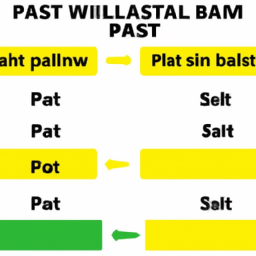Paintball How Fast
How Fast Is A Paintball
Wait, How Fast Is A Paintball?
Paintball, one of the most popular recreational sports of this century and something that just about anyone can enjoy! It's also an ever-evolving game with constant tweaks and refinements being made to the balls, guns, and their accessories.
You might have asked yourself: how fast do paintballs travel? This is what we'll explore in detail today, looking at the history of paintball, the physics behind paintballs, the regulations put into place for the paintball's speed, and, in turn, how the speed affects the safety and playability of the game.
History
According to National Paintball, the game of paintball as we know it began in 1981 when Charles Gaines and Bob Gurnsey set up the first-ever commercial paintball field in the woods of New Hampshire. The saplings, trees, and shrubs served as the plastic cups, paper plates, and objects they used to begin creating the beloved sport.
It was Gurnsey who ran a local business producing oil pumps. He was responsible for the creation of the first paintball guns: CO2 powered markers. These markers were made to utilize paintballs, allowing games to not only be played but enjoyed.
The Physics Behind Paintballs
Paintball guns use pressurized gas to fire a small round capsule filled with paint. The pressurized gas causes the capsule to spin extremely quickly as it exits the gun, generating a much higher velocity than other projectiles used by the military.
According to the physics computing lab at the University of Toronto, the average paintball can have a speed ranging from 50 to 90 metres per second. To put this in perspective, this would mean that the projectile has a speed similar to that of a high-speed BB gun.
Regulations
Speed is a critical aspect of the game, and it's important for the safety of those playing it that the speed is kept within a safe limit. This is why there are strict regulations on the speed of paintball guns around the world. Most countries including the United States, Canada, and the UK have regulations that limit the speed of a paintball to 290 feet per second.
The governing body of paintball in the US, The National Collegiate Paintball Association or NCPA, has even stricter limitations on speed, limiting it even further to a maximum of 260 feet per second.
The Effect Of Paintball Speed On The Game
The speed of a paintball has an important effect on the game, both on the safety and the playability. If the speed of a paintball is too high, it can cause bruise or even some skin abrasions. This in turn, can drastically reduce the enjoyment of the game for the players.
It can also make it difficult for a player to determine where the projectile is coming from due to its higher velocity. This can cause tensions to brew among players on the field. Thus having a safe speed of the paintballs can facilitate an enjoyable and safe game.
Final Word
To sum up, the answer to the question How fast is a paintball? is simply that it depends. The regulations set in place by various countries including the US and Canada keep the speed within a safe limit of 260 to 290 feet per second. This ensures the safety and the enjoyment of the game for all involved.
Exploring the history, physics, and regulations behind paintballs gives us a better understanding of the beloved sport and how it's changed over the years. Ultimately, the speed of the paintball is instrumental to the game and helps to make it both safe and enjoyable for those who play.
Takeaways
- The game of paintball began in 1981 and has since grown to become a beloved recreational sport.
- The physics behind a paintball has it spinning quickly as soon as it exits the gun, producing an average speed range of 50 to 90 metres per second.
- The National Collegiate Paintball Association in the US has set the speed limit to a maximum of 260 feet per second to ensure the safety of the players.
- The speed of a paintball has an effect on the playability and safety of the game, making it important to follow the regulations.

Previous Page
Next Page
